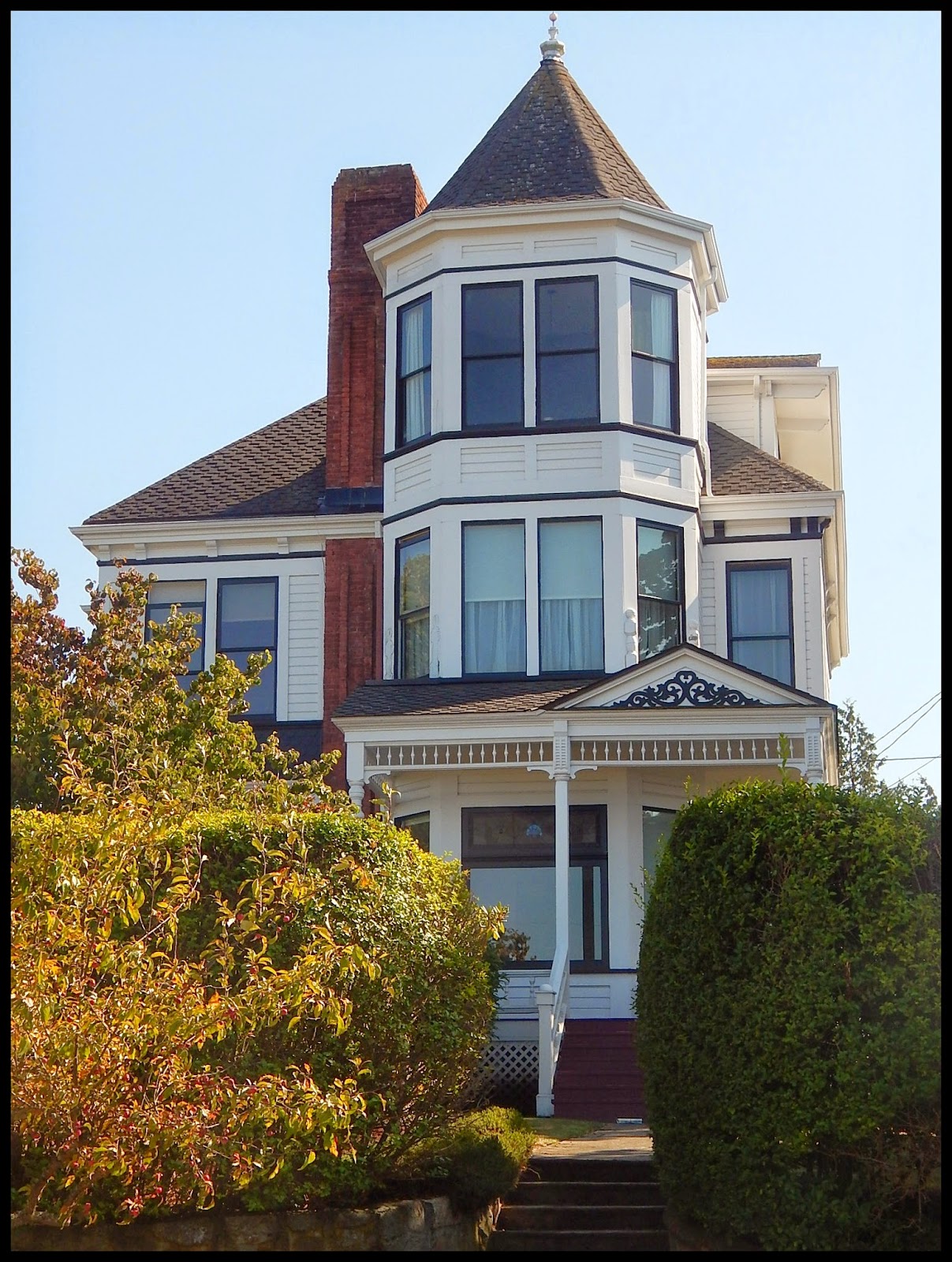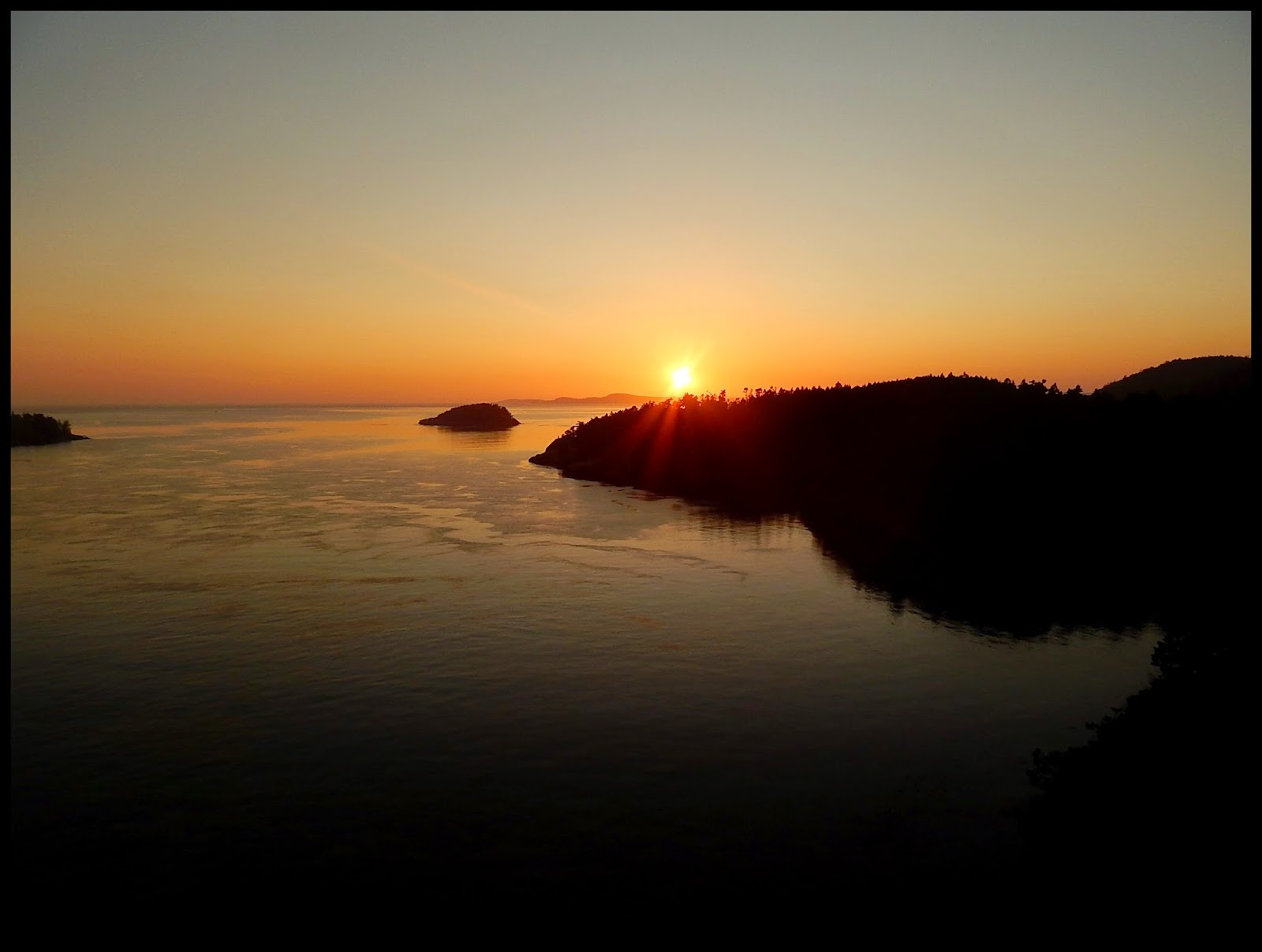So many things to do in Anacortes..... So little time.
Before Sleeping Beauty arises and joins the living I take a little walk over to the Visitors Center and load up on free advise and brochures. I have always found it helpful to find out from locals the best places to go and leads on the best hikes and in this case I want advise for visiting any of the islands in the time we have remaining.
Once SB gets up we head out for a tour of the Historic Area in the downtown. A Little brochure that I picked up has all kinds of info about the old buildings in the historic district but I soon abandon the brochure and end up walking and then driving about town randomly.
A $5000 dollar grant from the Carnegie Foundation built the building that would become today's Museum.
Another welcoming activity that the town sponsors is live park concerts twice a week with music from many different genre's . While we were here there were two concerts, a country concert and a big band concert to the delight of locals and visitors alike.
My foot is still tapping from the musical extravaganza.
Causland Memorial Park (710 N Avenue) was built in the 1920′s by Louis Lepage and is on the National Register of Historic Places.
The park is dedicated to Anacortes veterans from World War I to the Vietnam War.
The 2 acre park is unique in its use of decorative rock and black and white mosaic for structures and walls. Low, serpentine mosaic walls surround the park, and a bandstand, amphitheater and terraces are similarly made of colored pebble and rock mosaic.
We have seen lots of little towns, seaports and farming villages. Capturing the uniqueness and the spirit of each little town is what I aim to do, as I walk or drive about. What do I see or experience that stands out to me? I hope that I am able to convey that makes it special to me as I share a little time in each place, for that is what I want to remember.
Here near our temporary home we found a Cat Adoption Center.
It is clear that cats run the place and are happy little kitties!
This is a happy little house and the owners that sells their crafts right from the door.
While Anacortes does not have the number of Victorian Painted Ladies as does Port Townsend we did find a number of unique and interesting houses.
I always find some houses to love.... this one gets my vote for most unique in Anacortes.
While visiting with the gals in the visitor center I decided due to limited time, instead of going to more of the San Juans Islands, I would further explore Fidalgo Island and Whidbey Island.
We head out to Deception Pass , a strait separating Whidbey Island from
Fidalgo Island where Anacortes is located. It connects Skagit Bay, part
of Puget Sound with the Strait of Juan de Fuca. We will be doing more
exploring of these two Islands without having the additional expense or
Ferry Rides or waiting for a Ferry or trying to decipher the complicated
ferry schedules. Yep, I'm still a little gun shy after my last ferry
fiasco. An let's face it there is more to see than I have time anyway.
Ebey's Landing is oozing the kind of historical details that great westerns relate.
Colonel Isaac Neff Ebey was among the first of the permanent settlers to Whidbey Island. Upon the advice of his friend Samuel Crockett, Ebey came west from his home in Missouri in search of land.
In October 1850, Ebey moved from Olympia to Whidbey Island. When Congress passed the Donation Land Claim Act 1850, Ebey claimed 640 acresfor himself and his family overlooking Admiralty Inlet.
His wife and two sons joined him there along with many more of his relatives.
Due to encounters with local Native Americans he built a Block Building for his families protection. His wife Rebecca later died from Tuberculous and complications of childbirth.
He remarried and his family continued to live and farm in the rich farmland above the bluff.
Blockhouse built in 1855 by Ebey and restored in 1930
They farmed using Old World farming techniques such as hedgerows (that utilize natural vegetation as barriers between crops contain weeds and avoid soil erosion) These techniques are still being used in the area today.
During his nine years in the Pacific Northwest, Isaac Ebey was a vital player in territorial affairs. He was instrumental in helping persuading the legislature to sign the Monticello Memorial, separating Oregon and Washington Territories in 1853.
In 1857, a party of northern (thought to be Haida) Native Americans braves led by canoe into the Puget Sound on a mission of vengeance. One of there chiefs and 27 other members of there Tribe were killed in an atack by the USS Massachusetts the year before. The Native American party searched for a white Hyas Tyee (great chief) in retaliation.
On the hot summer evening of August 11, the natives beached at Ebey's Landing and
traversed the steep cliff up to Ebey's home. Knocking on Isaac Ebey's
door, the natives called him out of the house, shot him, and
beheaded him.
His family was able to escape to the blockhouse and nearby woods.
His two sons remained in the area and continued to farm the land.
Much of the farmland continues to be farmed today while a portion of the bluff and shore area has been made a National Historic Preserve and contains habitat found only in a few places in the world.
Remains of Fort Casey
Fort Casey is located on Whidbey Island on the Admiralty Inlet was considered so strategic to the defense of Puget Sound in the 1890s that three forts, Fort Casey on Whidbey Island, Fort Flagler on Marrowstone Island and Fort Warden at Fort Worden at Port Townsend, and were built at the entrance with huge guns creating a
"Triangle of Fire."
This military strategy was built on the theory that
the three fortresses would thwart any invasion attempt by sea.
Construction on Fort Casey began in 1897. In 1901, her big guns on disappearing carriages,
which could be raised out of their protective emplacements so that the
guns were exposed only long enough to fire, became active.
Development of long-range artillery, and aircraft soon made the
fort's batteries obsolete almost as soon as their construction
was completed, without artillery ever being shot at an enemy.
Today Aircraft guard the skies over the Puget Sound
The Lighthouse was built in 1861 and rebuilt in 1903, the lighthouse guided tall ships toward the Whidbey Island shore where they could fill their sails with wind. It was the last brick lighthouse designed by renowned German architect Carl Leick - its walls 18 inches thick to withstand the earthquakes that shake western Washington.
Admiralty Head's Fresnel lens was extinguished in 1922 and it is now an Interpretive Center and open to tours and visitors on the cliffs near Ft Casey.
Admiralty Head Light House and Fort Casey's big guns stood
watch over the entrance to Puget Sound for decades.
The Lighthouse was built in 1861 and rebuilt in 1903, the lighthouse guided tall ships toward the Whidbey Island shore where they could fill their sails with wind. It was the last brick lighthouse designed by renowned German architect Carl Leick - its walls 18 inches thick to withstand the earthquakes that shake western Washington.
Admiralty Head's Fresnel lens was extinguished in 1922 and it is now an Interpretive Center and open to tours and visitors on the cliffs near Ft Casey.
We find ourselves near the bridge at Deception Pass,
As
The Day Slowly
Fades Like the Sun
~Happy Trails~





























I remember walking by the 'garden gnome home' several times. I thought that Causland Park was interesting too. I used to park there in the afternoon taking advantage of the shade trees to work. Loved Anacortes!
ReplyDeleteGosh, you've shown us many aspects of Anacortes we weren't aware of--thank you! We also enjoyed learning the history of the Ebey family & Ebey's Landing. Thank you for an informative blog post with a beautiful close!
ReplyDeleteAnother wonderful post with fabulous pictures...thanks for the history lesson.
ReplyDeleteWow have you guys been busy while I've been without internet for a week. Great stories and beautiful pictures. I love the Causeland Park rock and mosaic structures and I swoon for any lighthouse. You've made Anacortes look like a great place to visit. Hope you don't have to go back for Hailey's school any time soon. I'm looking forward to some more islands.
ReplyDelete